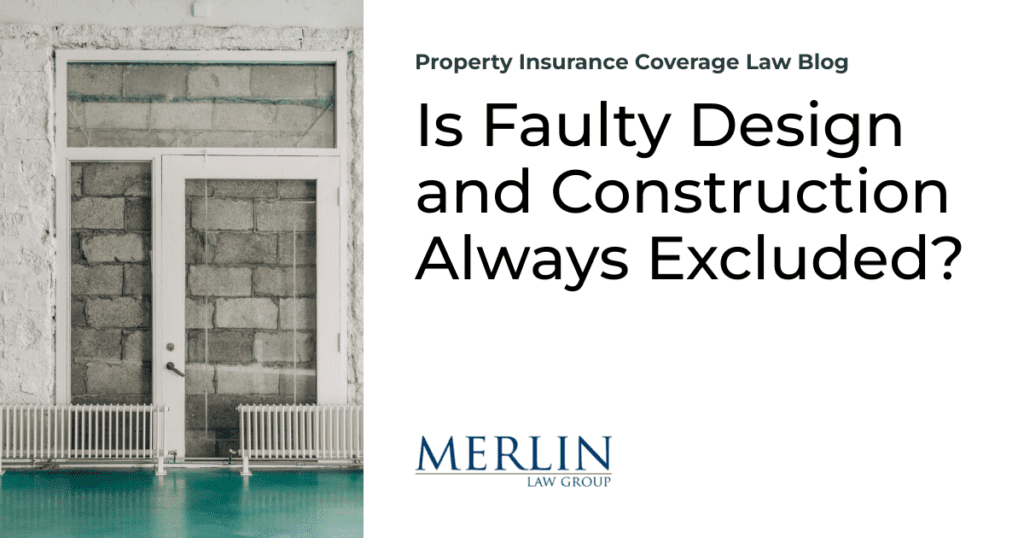Is Faulty Design and Construction Always Excluded?

The answer is “no.” But, exact policy language and the applicable state law will play a significant role in determining if coverage is to apply in cases of faulty design and construction.
A recent Washington appellate court opinion1 held:
Faulty design and construction of the Gardens Condominium roof assembly led to inadequate ventilation, which trapped condensation and excess humidity, damaging the roof. Gardens held an ‘all-risk’ insurance policy issued by Farmers Insurance Exchange. The policy excludes coverage for faulty construction, but ‘if loss or damage by a Covered Cause of Loss results, [Farmers] will pay for that resulting loss or damage.’ Farmers denied coverage for the roof repairs and Gardens sued. The trial court granted summary judgment for Farmers. Because the trial court misinterpreted the resulting loss clause in Farmers’ policy, we reverse and remand for further proceedings….
The “resulting” or “ensuing loss” exceptions to exclusions in property policies are important whenever the loss of faulty design and construction contributes to a loss. These cases are some of the most complex coverage determinations. Sometimes, the case facts and policy language are the same, but the state law applying to those can result in different outcomes. So, policyholders should obtain legal consultation anytime an insurer denies a claim based on faulty design and construction.
I strongly suggest that these posts: Defective Construction and Ensuing Loss Provisions, and Whipped Cream, Honey and Covered Ensuing Loss Delights, are read by those continuing to read this post to gain a better understanding how the resulting loss must fit as an exception to the faulty design and defective construction exclusions.
The cited Washington case is worthy of study. Some cases suggest that policyholders try to read the ensuing loss exceptions too broadly, thereby making the exclusions for faulty design and workmanship meaningless. The Washington court commented on this argument and turned it around:
And Farmers’ concern about the resulting loss clause swallowing the exclusion does not bear out. The resulting loss clause only limits the scope of the exclusion. In contrast, if we were to interpret a resulting loss clause to apply to only independent, unforeseen covered perils, the clause would be superfluous. The policy already covers unforeseen independent perils that it does not otherwise exclude. See GMAC v. Everett Chevrolet, Inc., 179 Wn. App. 129, 135, 317 P.3d 1074 (2014) (we favor contract interpretation that does not render language meaningless or ineffective).
The analysis of the case law was very complex, and the court’s factual reasoning was simple:
Here, Gardens’ policy excludes coverage of faulty construction. That exclusion limits Gardens’ coverage. But the resulting loss clause narrows that exclusion. In the resulting loss clause, Farmers agreed to pay for any loss or damage caused by a covered peril resulting from faulty construction. The parties stipulated that ‘[t]he damage was caused by condensation and/or excess humidity resulting from inadequate ventilation of the roof assembly due to the faulty, inadequate, or defective construction, repairs and/or redesign.’ So, if the policy covers the perils of condensation and excess humidity, it covers the loss or damage from those perils.
Again, these complex cases beg for legal opinion. Adjusters and policyholders should seek legal opinions when faced with these cases because the law varies significantly between states. Subtle differences based on facts and policy language are important.
Thought For The Day
For every complex problem there is an answer that is clear, simple, and wrong.
—H. L. Mencken
1 The Gardens Condominium v. Farmers Ins. Exchange, No. 83678-1-I (Wash. App. Dec. 19, 2022).







